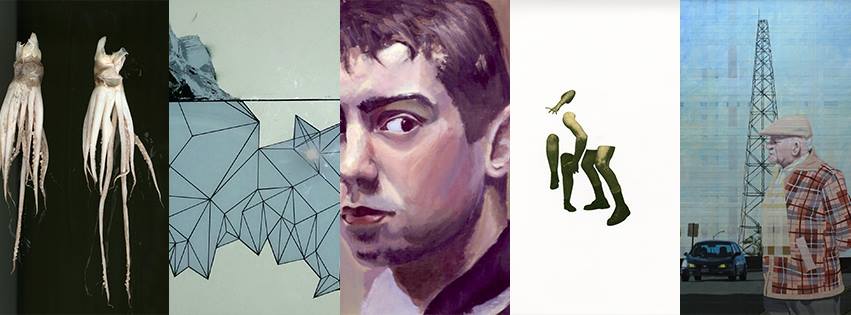When one usually thinks of networking or building a network, there’s the instant thought of exchanging contact information with others to build tit-for-tat relationships — often, in the world of business. We rarely associate network with community. Often we see ourselves at the center of our personal network; a shared virtual space, composed of people with the same or similar occupations. But once our perspectives are changed to this degree, then we are able to initiate ways of getting everyone within that network to connect and share with each other, thus creating an actual community.
Creating an actual community is the message I get from the Indipractices Collective, a group of artists brought together by artist and curator Jacob Brown. Indipractices started with a group of 11 artists, mostly recent grads from Sheridan College, and has recently spanned to 17 members. Talking with some of these artists, it’s quite evident that the collective places importance on a communal state-of-mind, with the goal being an ever-expanding network that goes beyond social media communication onto face-to-face interactions within the art industry. I’m getting the impression, especially with this current exhibition, that many of them shift their gears away from obsessive consumerist culture. In Smaller Is Better, all of the artwork was made accessible by being more affordable, which is especially appealing to the younger demographic of art enthusiasts. There were also zines and t-shirts for sale at the front desk. Indipractices Collective is like a peaceful brigade of anti-consumerists, which is interesting, and might also be the reason behind their name.
The other, possibly bigger, intention of this exhibit was to have the collective work within a smaller scale of dimensions than they are used to; although a few of them do work in a smaller scale, like Elizaveta Semechko, who displayed her paintings Burst 1 & Burst 3. These pieces are inspired by the famous novel Slaughterhouse Five by Kurt Vonnegut. Semechko’s brother, a scientist, suggested her to work with supernovas for these series of explosions and this was her first go at it.
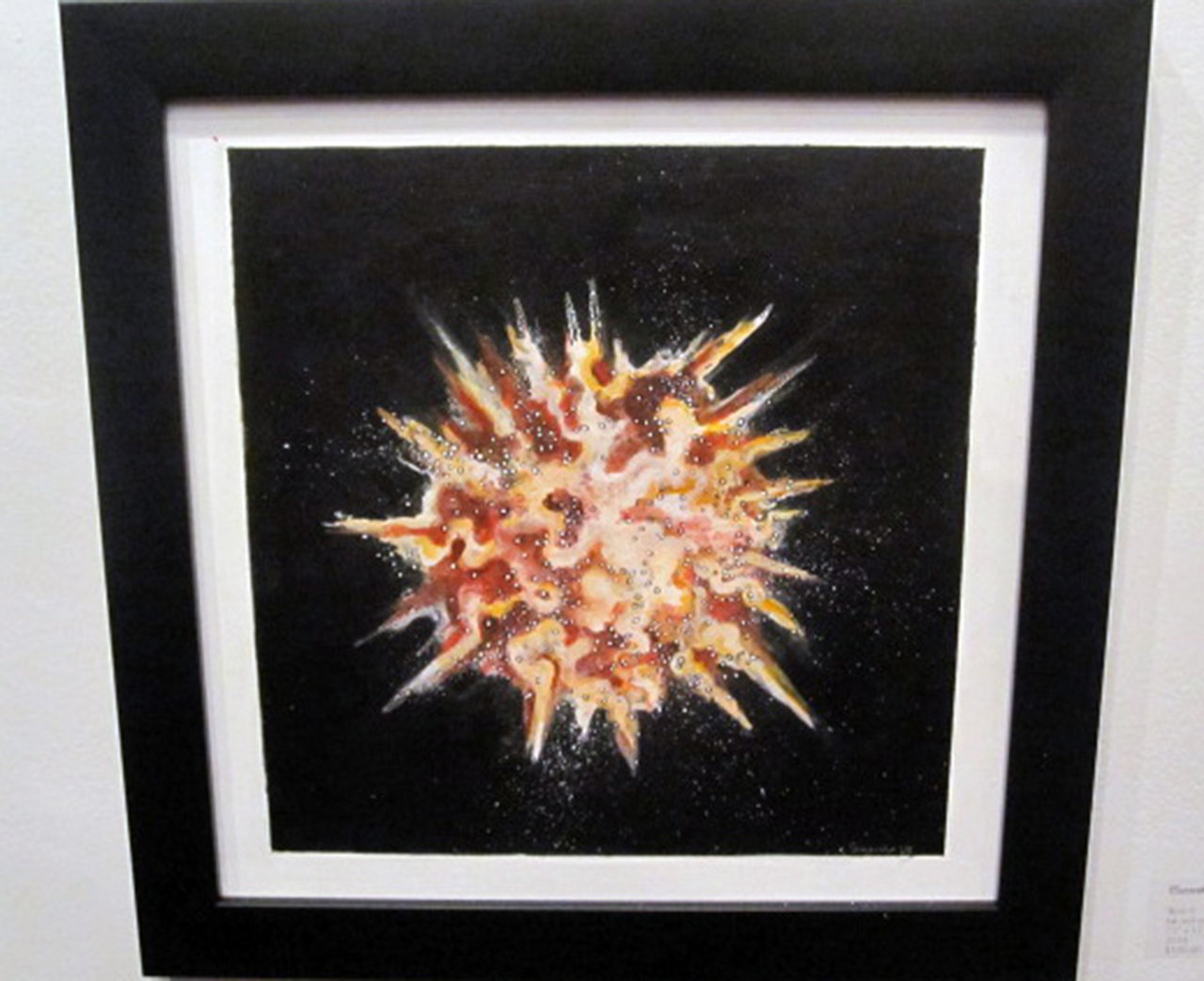 Elizaveta Semechko, Burst 1, 2014, ink and acrylic paint, 12 x 12 inches.
Elizaveta Semechko, Burst 1, 2014, ink and acrylic paint, 12 x 12 inches.
Kylie Chadwick, another exhibiting artists, is the opposite of Semechko in the sense that she normally works with larger pieces: she creates mixed-media work with many layers and details. This show was a challenge for her, because it pushed her to express herself with less layers, with the end result that is more bold and less subdued, as Chadwick says. Her watercolour painting entitled, Hold Your Own Damn Hand stands out with it’s bold colors and its message as well. The statement is clearly a wake-up call to claim your independence. Chadwick was inspired by a public message she saw, and it read: “Hold your own hand”. It spoke about independence and self-sufficiency, two important factors for her.
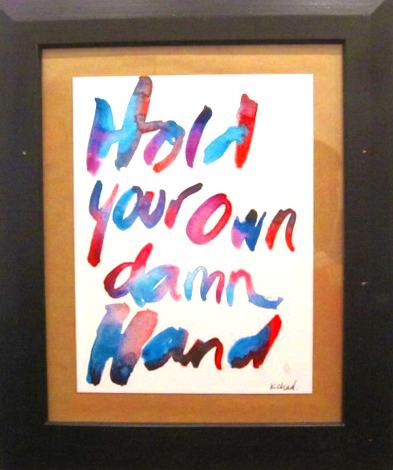 Kylie Chadwick, Hold Your Own Damn Hand, 2014, acrylic ink on watercolour paper, 10 x 12 inches.
Kylie Chadwick, Hold Your Own Damn Hand, 2014, acrylic ink on watercolour paper, 10 x 12 inches.
Next to Chadwick Daniel Deus showcased two different series of painting. One of them is entitled, The People Watcher, where he depicts photos taken from his cellphone that were not intentionally meant to be taken as portraits. The other series are portraits with solid background color, with the figures each having a brownish tone.
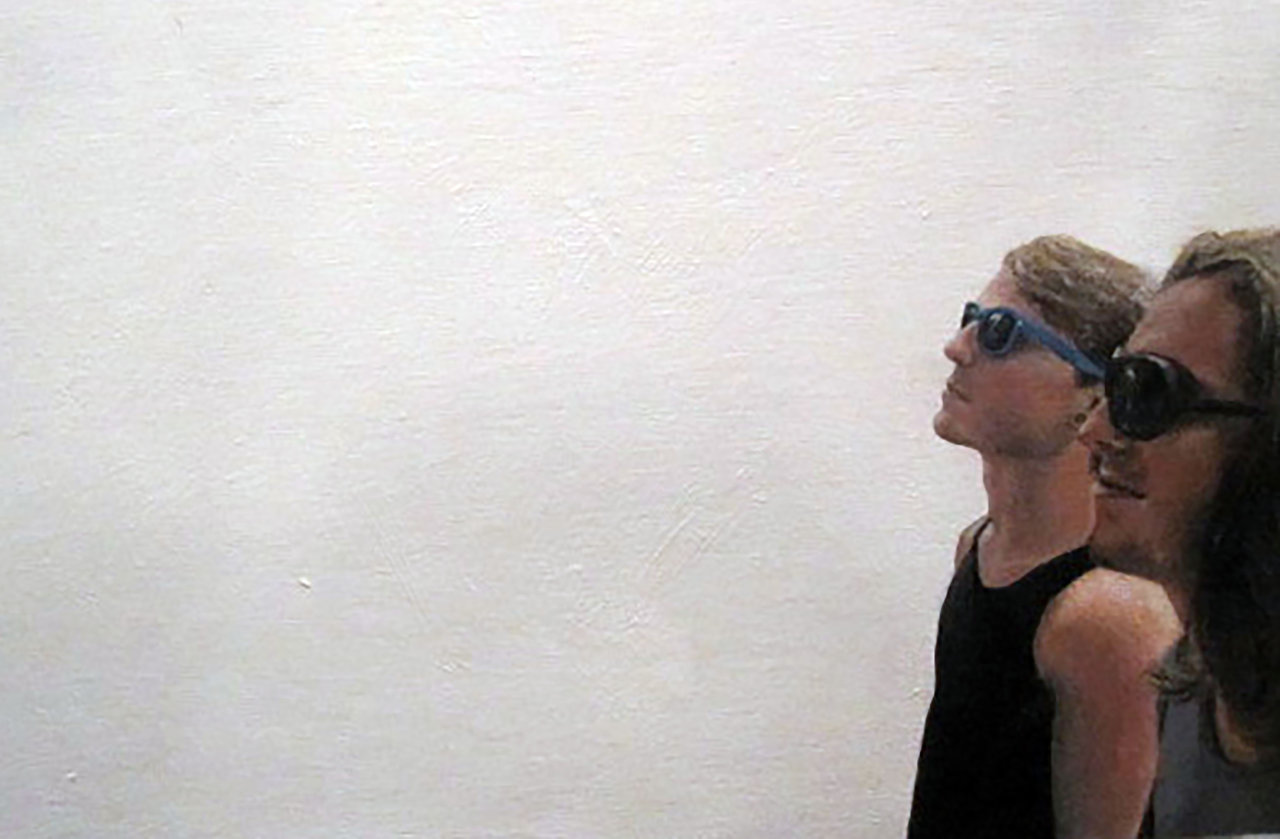 Daniel Deus, People Watcher #1, 2014, acrylic on wood, 14 x 11 inches.
Daniel Deus, People Watcher #1, 2014, acrylic on wood, 14 x 11 inches.
My favourite pieces of the show were Nathan Galbraith’s. His style reminds me of underground art culture, and it just so happens that Galbraith is inspired by graffiti, surrealism, and toy art. In one of his pieces, Thank God for capitalism, he drew his own version of Hello Kitty — or as he likes to call her “money cat”. It’s a commentary against the overhyped popularity of this pop culture icon, overused for the simple sake of selling a product. We moved onto talking about his other series, How I Killed a Few Kings: suicidal stories of similar-looking characters he calls kings, which don’t necessarily have intricate meanings behind them, but hold intense melancholic auras nonetheless.
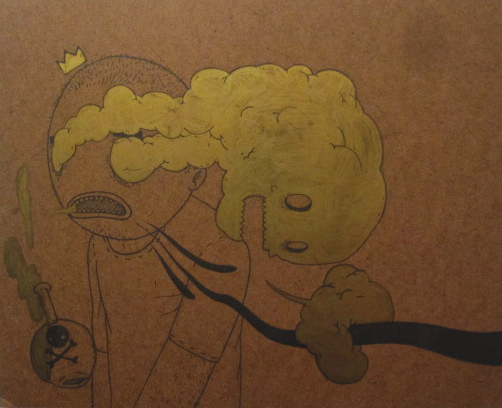 Nate Galbraith, King 3, 2013, ink and gold paint on Masonite, 8 x10 inches.
Nate Galbraith, King 3, 2013, ink and gold paint on Masonite, 8 x10 inches.
Every art piece was impressively hung to fit together like a puzzle by Daniel Deus. Despite the number of artists showcased, there was still room on the walls, giving the impression of a larger gallery space. In this sense, the Smaller Is Better exhibit certainly lived up to its name, and was without a doubt a social commentary worth experiencing.
Text and photo: Josephine Mwanvua
*Exhibition information: October 30 – November 5, 2014, The Black Cat, 2186 Dundas Street West, Toronto. Gallery Hours: Mon – Tues, closed. Wed – Sat, 1pm – 6pm.

